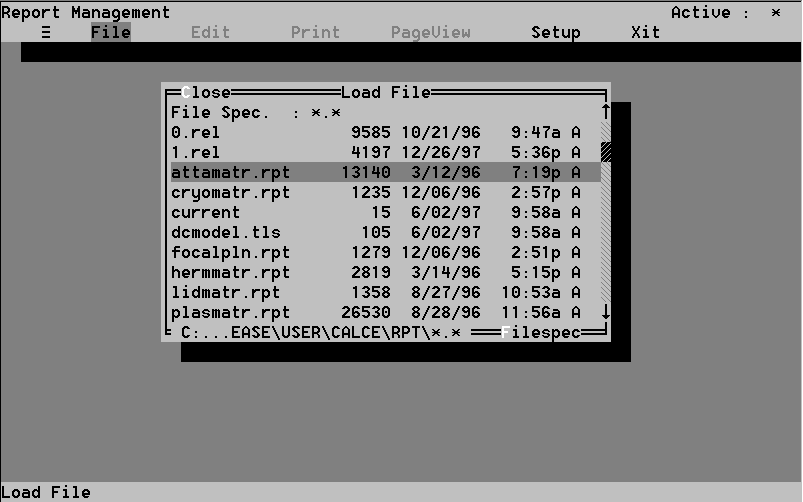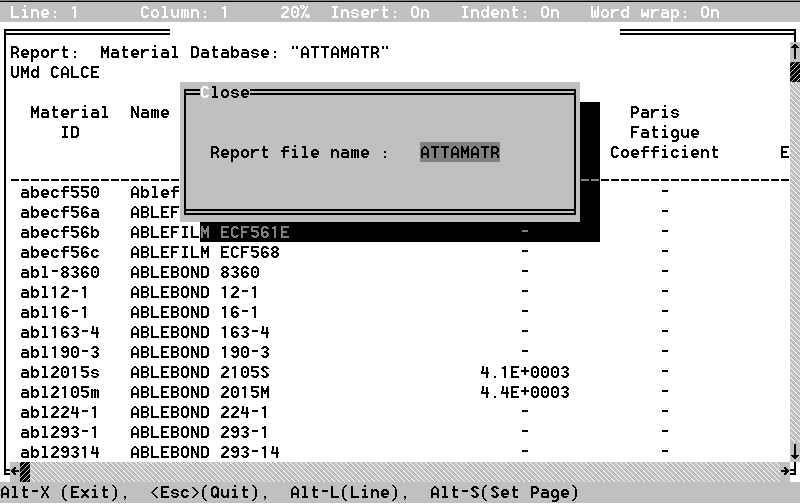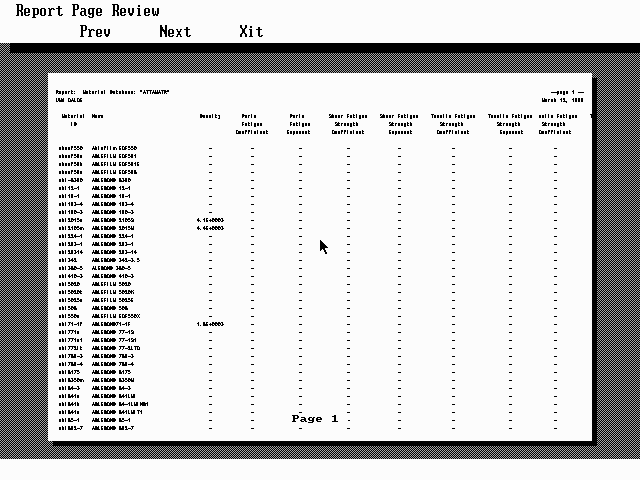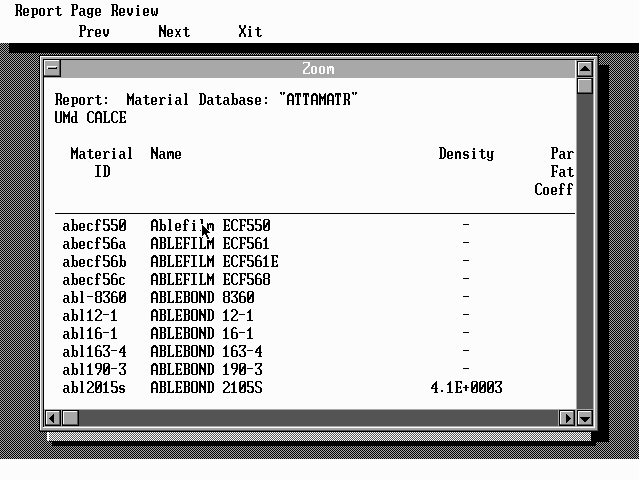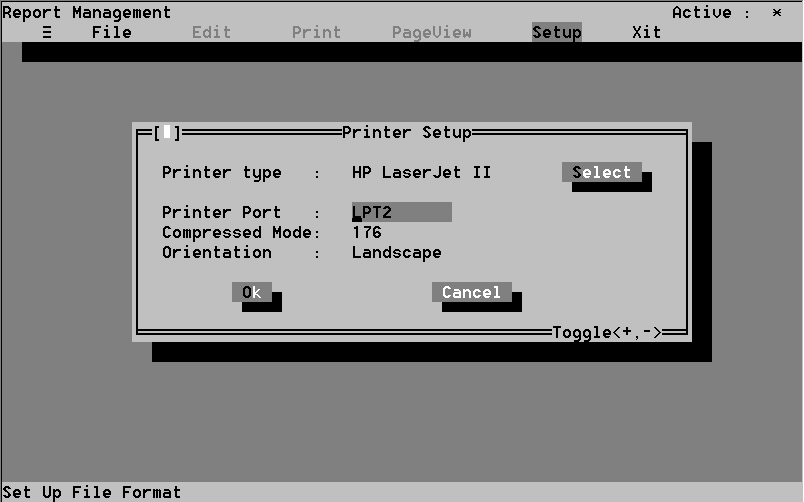-
Scroll to the file you want, select it, and press Enter.
-
Select the Filespec hot key, highlighting the File Spec.
field. Type the file name and press Enter. The file name appears.
Press Enter to load it.
The file name appears in the menu bar. Press Esc to cancel. Use
the Close command if a file is active. Otherwise, you will deactivate
the file and have to reload it. You return to the Report Manager screen.
If you are unsure of the exact file name, in the Filespec field
type the first part of the name followed by a * extension, or type
a * followed by its three letter extension. The file(s) will appear.
8.5.1.1.2 The Delete Command
-
Select the Delete command from the File menu. The
file selection window appears.
-
Select a file to delete. A window asks you to confirm. You return
to the Report Manager screen.
8.5.1.1.3 The Create Command
Select the Create command from the File menu. A
list of libraries appears. Press Return. A Package Report screen
appears (see Figure 65). It contains two commands:
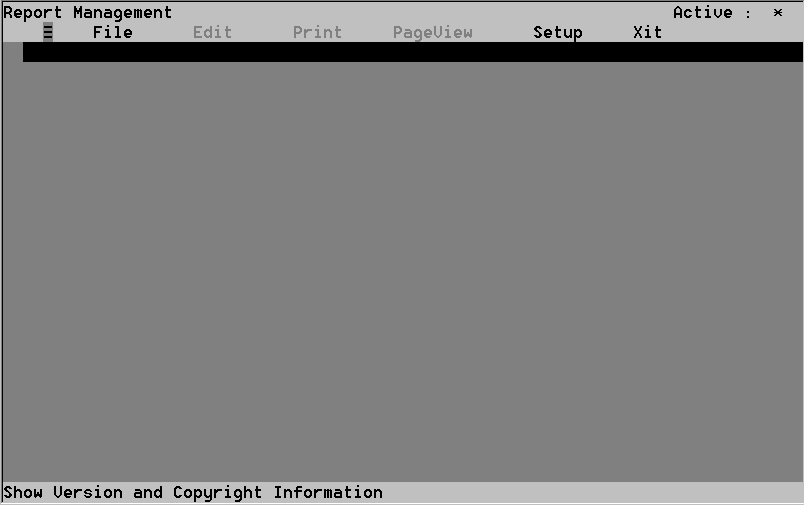 Figure 65. Create command screen
Figure 65. Create command screen
-
Setup enables you to choose elements in each library to include
in the report.
-
Report enables you to name and generate the report.
8.5.1.1.3.1 The Setup Option
-
Select the Setup option. A menu containing a number of elements
from the library appears (see Figure 66).
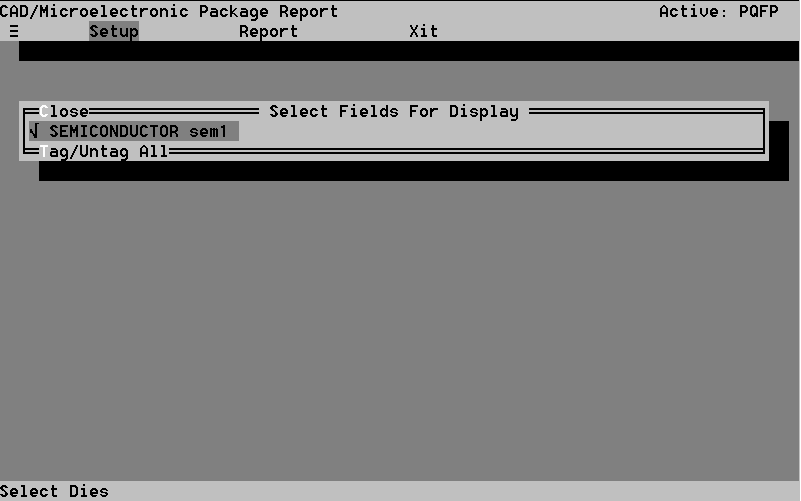 Figure 66. List of package components
Figure 66. List of package components
-
Select an element for inclusion in the report and tag it by pressing
Enter.
8.5.1.1.3.2 The Report Option
You must invoke the Report option and name the file to generate
the report.
-
Select the Report option. The window in Figure 67 appears.
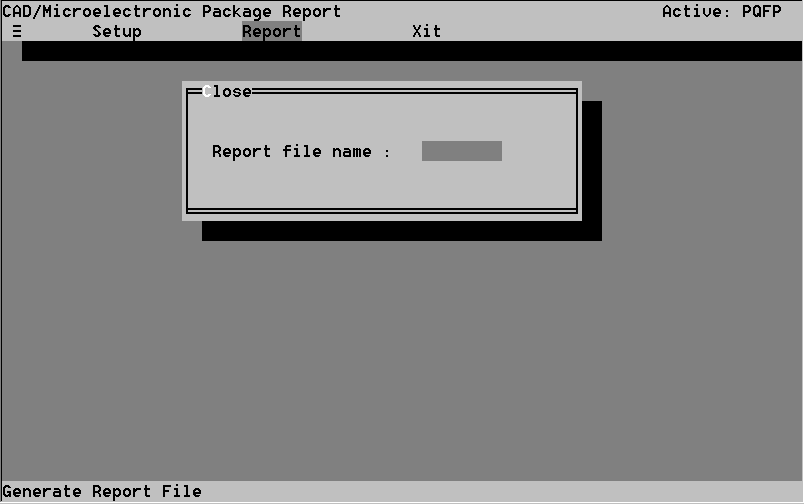 Figure 67. Report option window
Figure 67. Report option window
-
Type a name for the file. If you duplicate an existing report name, a message
appears asking if you want to overwrite the existing file. Select
Yes to overwrite and generate the report, No to cancel and
return to the window to type another name. Use file extensions to give
different names to reports for the same dies or components. You return
to the Package Report screen.
To view the new report, select the Xit command to return
to the Report Manager screen and then select the Pageview
command in the File menu to view it.
8.5.1.2 The Edit Option
-
Select the Edit header option from the Report Manager
screen. The loaded file appears (see Figure 68). You can now scroll through
and edit the report.
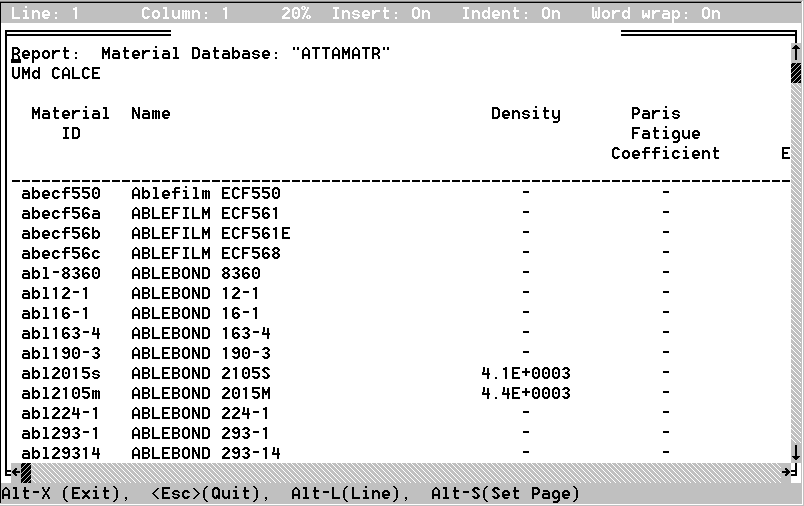 Figure 68. The Edit option
Figure 68. The Edit option
-
To set new page breaks, press Alt-S. The page breaks are marked
by the control character L in the display.
-
Define the line width by pressing Alt-L. A window appears. Enter
the new length and press Enter.
